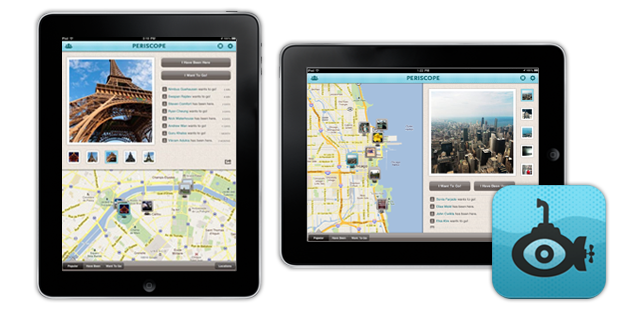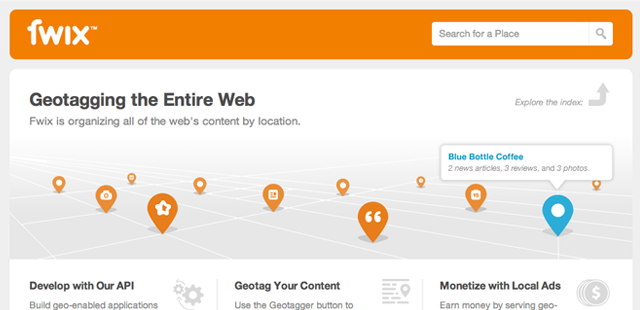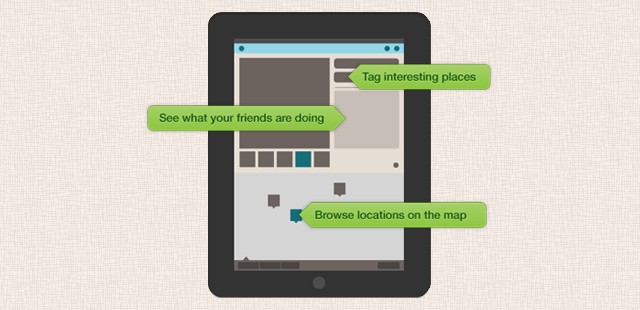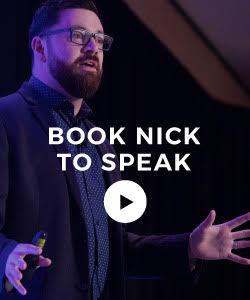As Creative Director for Fwix, Jordan Gadapee is responsible for the geotagging start-up’s brand development across all platforms including web, mobile, and the app marketplace. As we consider the impact that all of these screens have on our business, Jordan sheds some light on how we can best articulate our brands to meet the needs of the changing world around us.
Thanks for that introduction. Before answering your questions, I want to be clear about the fact that I get to work with some pretty stellar folks. I don’t have time to name them all, but Noah Hayes is a Co-Founder and the Product Director. He is an incredible talent, with a knack for getting the best out of people. The Founder and CEO Darian Shirazi, has great vision, and holds all of us to exceptional standards.
You have some pretty insightful thoughts on a website or platform’s user-interface as a dominant brand-touchpoint. Can you share your thinking on that with us?
We all know that a brand is not your logo, marketing copy, nor visual materials — rather it is the gut feeling or attitude consumers have about your product. That’s an easy definition to memorize but very difficult to imagine. However, it’s not so difficult to imagine when you realize that the majority of brand interaction that occurs does so across interfaces.
Interfaces are made up of type, logos, images, A-to-B flow, icons, filters, and the list could go on. The experience of your customer is defined, more often than not, by their interaction of the interfaces you have put in place (your website, mobile site*, Facebook page, Twitter page, and mobile applications). That experience should be responsive, easy to use, and distilled.
OS X is a wonderful analogy. Not many people can recall the OS logo for Apple’s most popular operating system ever (it’s changed at least four times). In fact, most people don’t even know what big cat they’re using (Lion, Snow Leopard, Puma, Liger), but what they do remember is having a good experience while use a Mac.
* If you or your customers don’t have a mobile site, you’re behind the curve … literally, smartphone internet usage has exploded and surpassed desktop internet usage.

Fwix just launched the Periscope Photo Viewing app for iPad in quiet beta that took off like wildfire. What considerations do you take into account when developing a brand for an app?
The biggest consideration is user flow. The identity materials (colors, logo, type, texture, etc) certainly matter, but what’s most important is to create a flow of using the application that has as little friction as possible.
Removing the friction from your interfaces isn’t necessarily about removing steps, but is instead about creating a navigation that meets the expectations of users. Because applications are very different from one another, there aren’t a lot of rules one can follow in order to build a good flow. However, there are some things you can do to:
- Mock-up. Sketch, doodle, and build the system with as few graphical elements as possible, and create a lot of variations. Don’t assume you know how people will interact with your site or app. Be critical, build quickly, test internally, and try again.
- Build the MVP first. The Minimal Viable Product, is the distilled version of what you want to accomplish. For example, if you want people to use your website for customer support, build only that, and avoid adding your company’s history, product offerings, or a section about your staff.
- Test and iterate. No one gets it right the first time. I certainly don’t, and neither do you, Facebook, Twitter, Foursquare, nor Google (Google tested 40 different shades of blue for links). If we use the customer support example again, you might track how often someone starts filling out a form, but does not finish. You could increase that completion rate by making some changes (new instructions, less requirements, colored buttons, more steps), and measure those results.
We are doing all of the above with Periscope. We also ran a 24-hour ad campaign (which started as an a/b test), but a lot of the growth has been organic. There are other stats we’re tracking outside of total downloads. The number of user actions performed and the amount of time spent on the app are almost as important as downloads. Our next steps will be to correct issues or bugs with the app, and follow-up by testing notifications that we hope encourages more use of the application.
The best part about Periscope is that almost anyone could have built it using the Fwix API. Our data is open for all developers to use and experiment with.

How does social networking and community building impact brand development?
Social networking and community play a crucial role in spreading brand awareness. I could talk at length about this, but I’ll keep it brief. Adding a social component to your brand is risky because if it’s done poorly it reflects very badly. To avoid a disaster, treat the the social component as an integrated experience of the product or service that represents your brand. Do not just tack it on at the end.
Online, mobile, interactive, and the offline world at large — where do you think it’s most challenging to build a brand today?
The most challenging brands to build are the ones that require some presence in all of those spaces. It’s much easier to maintain control and consistency of a message and identity, if you only have a single platform to worry about. For this reason, I would encourage businesses to start with one area, get it right, and then move onto something else.
What most excites you about where brands and media are heading?
Mobile websites/web applications are very exciting to me. The fact that more and more people are carrying their computers with them everywhere opens up a lot of possibilities for new ways of engagement. Mobile brands have the capacity to do any of the following: supply information immediately, interact with individual on a social level, include real world interaction with digital elements, offer location aware services or information … I could go on, but someday we won’t have desktops anymore. Only super-powered “phones” that connect to docking stations.

Fwix is all about geotagging the web. How do you see location-based services, apps, and games impacting brand development?
Emerging and existing brands could use that information in a variety of ways. They could use it to get a better sense or understanding of the competition. Businesses could use the information to provide and more enriching experience of their product, or they could they could develop entirely new products with that location information.
Most people are surprised when they realize how much content is generated around a place. There are photos, reviews, factual information, tweets, news, events, check-ins, and more. The amount of location-based information, and the need for that information, will continue to grow alongside the popularity of location-aware devices. Soon it will be common-place for businesses to utilize location-based information in their products.
A subtle example would be the John Deere app listing out nearby stores where you can buy grass seed. Those listings would include directions, contact information, aggregate reviews, photos, and so forth. A more obvious use of location-based information would appear as a major product or feature. What if, for example, the mobile version of your blog leveraged a places database that allowed people take a photo and share brand-insight that you encouraged people to discover around them? In turn, you could showcase that list of insights based on news or reviews about places shared …
It’s pretty remarkable what you can explore and discover when you have the data.

Thanks Jordan! As a reminder, you can learn more about Fwix on their website or by playing with the Periscope app on your iPad.









